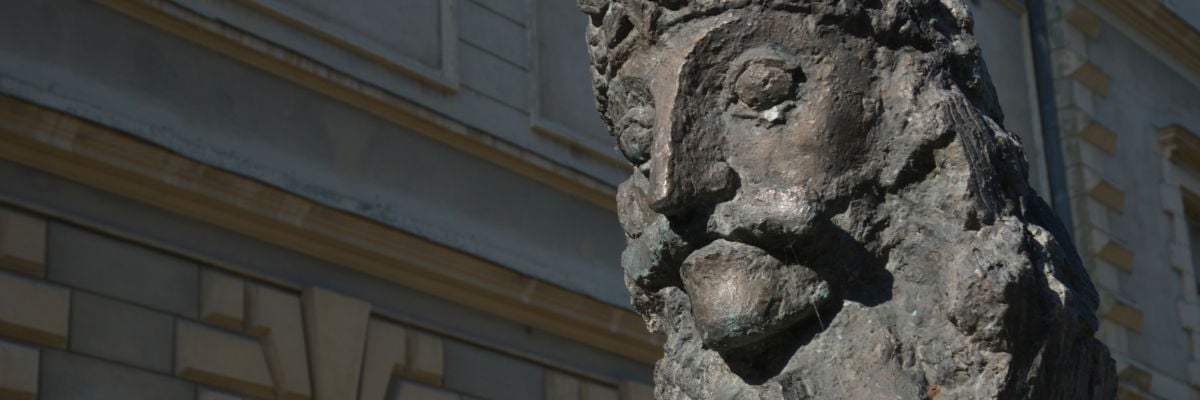
The meeting was not going very well. Having assembled a group of military leaders in the Hungarian city of Györ, Fr. John Capistrano—nearly seventy years old and standing bravely in his shabby monastic garb, as though it were shining armor—made a fiery call for a crusade against the invading Ottoman legions of Mehmed II.
“It is the will of almighty God that the Turks be driven from Europe,” the wizened friar insisted. “For those who follow me in this crusade, and their families, I will obtain a plenary indulgence. Who will march with me and my army?”
That “army” was a ragtag company of farmers, seminarians, peasants, students, and landowners whom John had assembled and who awaited his spirited and spiritual leadership, armed with pitchforks, scythes, clubs, and other clumsy weapons and tools. Numbering 8,000, they were not an impressive force. But John was undaunted and determined to make an impression—if not on these warlords, then certainly on Mehmed II.
The silence that overtook the room did not cow him, either, as he stared down the generals and diplomats gathered there who knew not what to say at such a proposal. Even the bold Hungarian warrior of Wallachian blood, John Hunyadi, felt the tension. He and his fellows were not convinced and shifted uncomfortably as John Capistrano awaited their response.
The only man who seemed cool under the heated call to arms was one who some doubted was a man at all. Another of Wallachian descent, he sat still as a statue, eyes smoldering beneath his princely headgear and his tremendous moustache concealing any sign from his mouth. Vlad Dracul, called the Impaler, was listening, recognizing something in this wiry, hollow-cheeked old priest that matched the fanaticism and ferocity of the Turks.
Dracul’s eyes met Hunyadi’s. Thus began the unlikely alliance among a saint, a soldier, and a vampire.
Born in 1386 in the kingdom of Naples, John of the town of Capistrano gained a far-flung reputation as a lawyer turned priest turned reformer who was from the beginning a hard-hitting, hard-to-get-along-with man of God.
After the fall of Constantinople in 1453, Pope Callixtus III charged him—due to his potent personality, no doubt—to muster a force to arrest the Turkish invasion of Eastern Europe. So, after years of preaching and laboring for the faithful and the Franciscans with Bernardine of Siena, John of Capistrano then turned soldier-priest and amassed what troops he could from the streets and villages of Hungary, determined to gain more official assistance in breaking the sultan’s siege of Belgrade.
John’s meeting with the Hungarian military heads in Györ seemed to fall on deaf ears, so he marched with his motley crew of crusaders toward the besieged fortress of Belgrade. But his exhortation had not been futile. Not only did he win the admiration of the savage Wallachian prince, Vlad Dracul, but he also stirred the martial politician John Hunyadi.
John Hunyadi formed a relief force for the determined John Capistrano and mounted a fleet of 200 ships on the Danube. Throwing his gauntlet into the impending campaign, Vlad Dracul agreed to hold the Transylvanian passes against Turkish reinforcements with his mercenaries and protect the eastern defenses of Belgrade.
In the summer of 1456, John Capistrano met John Hunyadi and Vlad Dracul on the groaning walls of Belgrade. There they sealed their alliance for the cause of Christ. They had mustered a significant militia, including war vessels, siege guns, and cannons. And when battle broke, so did the siege of Belgrade. The blusterous old priest, frail as he was, charged into the thick of the fighting with his men, bearing nothing but a crucifix to protect him.
With the valiant aid of Hunyadi and the strategic support of Dracul, John Capistrano emerged as a central figure in repelling the Ottoman stranglehold around Belgrade, which threatened not only Hungary, but also the Christian West. Together, they burst through the ring of Turkish land forces while the fleet on the Danube cleaved the seemingly unbreakable Turkish armada that had blocked passage to the city.
In desperation, Mehmed II joined the combat and was wounded in the thigh. As he was borne away, the Turkish army succeeded in penetrating the city—but, with the protruding bastions around the rampart turrets allowing for a deadly crossfire from above on those battering the walls below, the janissaries were finally routed at the fortress by the combined forces of John Capistrano, John Hunyadi, and Vlad Dracul.
Over 24,000 Turks fell in the fighting. The beautiful blue Danube ran red with blood as the bells pealed over Belgrade. Te Deum rang out, and when the news reached Rome, Pope Callixtus named the great day of victory as the feast of the Transfiguration.
Though John Capistrano survived the Siege of Belgrade, he did not survive the Bubonic Plague, which took his life only weeks afterward. He died on October 23, 1456 and would be canonized as the patron saint of Hungary.
St. John Capistrano has remained on the offensive for Hungary even from heaven. In fact, exactly 500 years later to the day, in 1956, Hungary chose John’s feast day to rebel against the Hungarian People’s Republic, imposed by the Soviet Union, and were victorious.
The story of John Capistrano’s league with the noble General Hunyadi and the savage Count Dracul of vampiric legend is one of those moments in history that are almost too fantastic for most fairy tales. What happened at Belgrade was a miracle—more of a miracle of concord than combat—and it is such miracles that will save Christian culture.
God can make the most dissimilar of men brothers by his inscrutable ways, which often involve circumstances that seem as though they’re from out of a dream world—such as a battle led by a saint, a soldier, and a vampire.
Editor’s note: It is worth mentioning that the association between Bram Stoker’s Dracula the vampire and Vlad Tepes (or Dracul), whose bust is today’s featured image, is a loose one, albeit well embedded in modern culture and thus not too offensive to draw on here. You can read more about the history of the real Vlad and the fictitious Dracula here.



